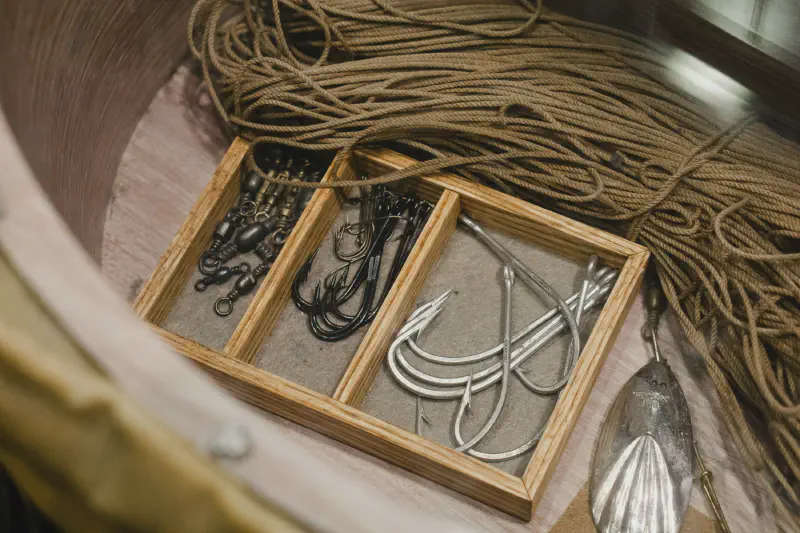What is Flutter Hooks?
When searching for the keyword Hooks on Google, you’ll find many results related to React. Indeed, as mentioned in the introduction, the flutter_hooks library by Remi Rousselet was built inspired by React.
Hooks are objects that help manage the life-cycle of a Widget. Their sole purpose is to increase the ability to share source code between Widgets by eliminating duplicated code.
You might wonder: “Wait, doesn’t StatefulWidget in Flutter already have initState and dispose methods to handle life-cycle management? Why do we need Hooks?” That’s correct, but it’s very difficult to reuse code in these two methods. Hooks were created to solve that problem.
Usage Guide
A simple example of Hooks is as follows:
| |
You can see that our Widget now extends HookWidget instead of StatefulWidget or StatelessWidget. In the build method, there’s a new keyword useState, which is one of the hooks in Flutter Hooks. We’ll explore some basic hooks below.
Now, when you click the FloatingActionButton, the text value will change as the counter variable increases, similar to how StatefulWidget works, right?
useEffect hook
This is similar to the useEffect hook in React, used to perform side effects synchronously during rendering. The effect can return a function, which will be called when the effect is recalled or the widget is disposed.
By default, the effect is called every build, unless you pass a key parameter. In that case, the effect is only called when the key changes.
Side effects can include stream subscriptions, opening a WebSocket connection, or making an HTTP request. You can cancel them when the widget is disposed.
| |
useState hook
This is the most basic hook when you want to convert a StatelessWidget to a StatefulWidget. When called in the build method, it maintains state between widget rebuilds.
| |
In this example, we pass an initial value of 0. The counter variable is an instance of ValueNotifier. The state is stored in the value property of ValueNotifier. Whenever the value changes, the useState hook will rebuild the widget to display the new value.
useMemoized hook
This is a useful method when you need to create a complex object and want to return the same object across multiple child widget rebuilds. useMemoized helps cache that object; the value is only computed on the first call, and subsequent calls return the previously stored value.
| |
useRef hook
Creates an object containing a mutable property. However, changing the property of the object does not trigger an effect. It’s suitable for use-cases where you need to share state between build method calls, but want to avoid unnecessary rebuilds.
| |
useCallback hook
Caches the instance of an entire function, if that function is recalled.
| |
useContext hook
Keeps the BuildContext of the HookWidget, so you don’t have to pass the context parameter through methods.
| |
useValueChanged hook
Monitors a value and triggers a callback whenever its value changes. Returning to the initial example, let’s modify it a bit:
| |
When you click the FloatingActionButton, the output will be printed as follows:
| |
As you can see, whenever the value of count changes, newCount also changes accordingly.
useStream hook
Helps subscribe to a Stream and returns its current state.
| |
useAnimationController hook
Creates an AnimationController and disposes it automatically.
| |
Benefits of Hooks
- State Management: Hooks simplify local state management, ensuring widgets only handle logic relevant to themselves.
- Reduce duplicate code: Custom hooks allow you to reuse widget logic, significantly reducing duplicate code and improving code quality.
- Improve Hot Reload: With hooks, hot reload is less likely to fail because the hook’s state is preserved.
- Convenience: Some built-in hooks like
useAnimationController,useFuture, anduseStreamare methods that can be applied to many common use-cases. - Simplify life-cycle: Managing complex life-cycles becomes much simpler with Flutter Hooks. They provide a solution for easily managing state, side-effects, and stream subscriptions.
- Flexible custom hooks: Besides the built-in hooks, Flutter Hooks allows you to create custom hooks, making your code more flexible.
You may already know that Remi Rousselet is also the author of two famous State Management libraries: Provider and Riverpod. He has combined Riverpod and Hooks in a library called Hooks Riverpod. You can harness the power of both with this library. Riverpod is for “global” application state, while hooks are for local widget state.
Conclusion
I find Flutter Hooks quite promising, but not many projects have adopted it yet. Have you ever used it? If you see any pros or cons, please share with me!
